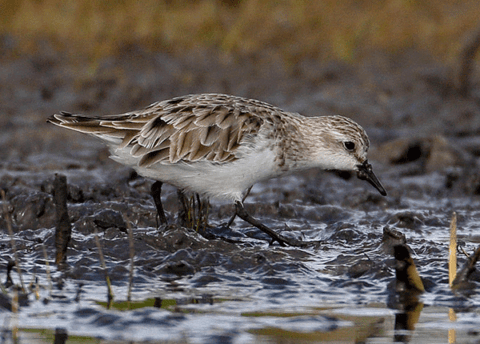
Introducing our most commonly encountered migratory wader, the Red-necked Stint (Calidris ruficollis).
Red-necked Stints are the smallest of the 37 migratory shorebirds to visit Australia. Although they weigh little more than a Tim Tam, their tiny wings carry them 25,000 kilometres between Australia and breeding grounds in Siberia and Alaska every year.

In the non-breeding season, their plumage is a smooth grey-brown on their wings and back. Their breast is slightly speckled with white underparts. When breeding season comes around, the plumage on their head, chest and belly turns brick red.



During migration, they land at ‘staging sites’ with other waders to rest and refuel, sometimes travelling more than 5000 kilometres between stops.
In Australia, Red-necked stints are most often seen in large mixed flocks in coastal areas. Their short, black legs and bill are adapted for picking up molluscs, crustaceans and insects on the surface of sandy beaches and mudflats.








